I thought I would take the discussion in a more lighthearted direction by focusing on a few architectural details I noticed. Examples reflecting local culture, customs and tastes could be found on contemporary buildings all across Bermuda.
Pastels
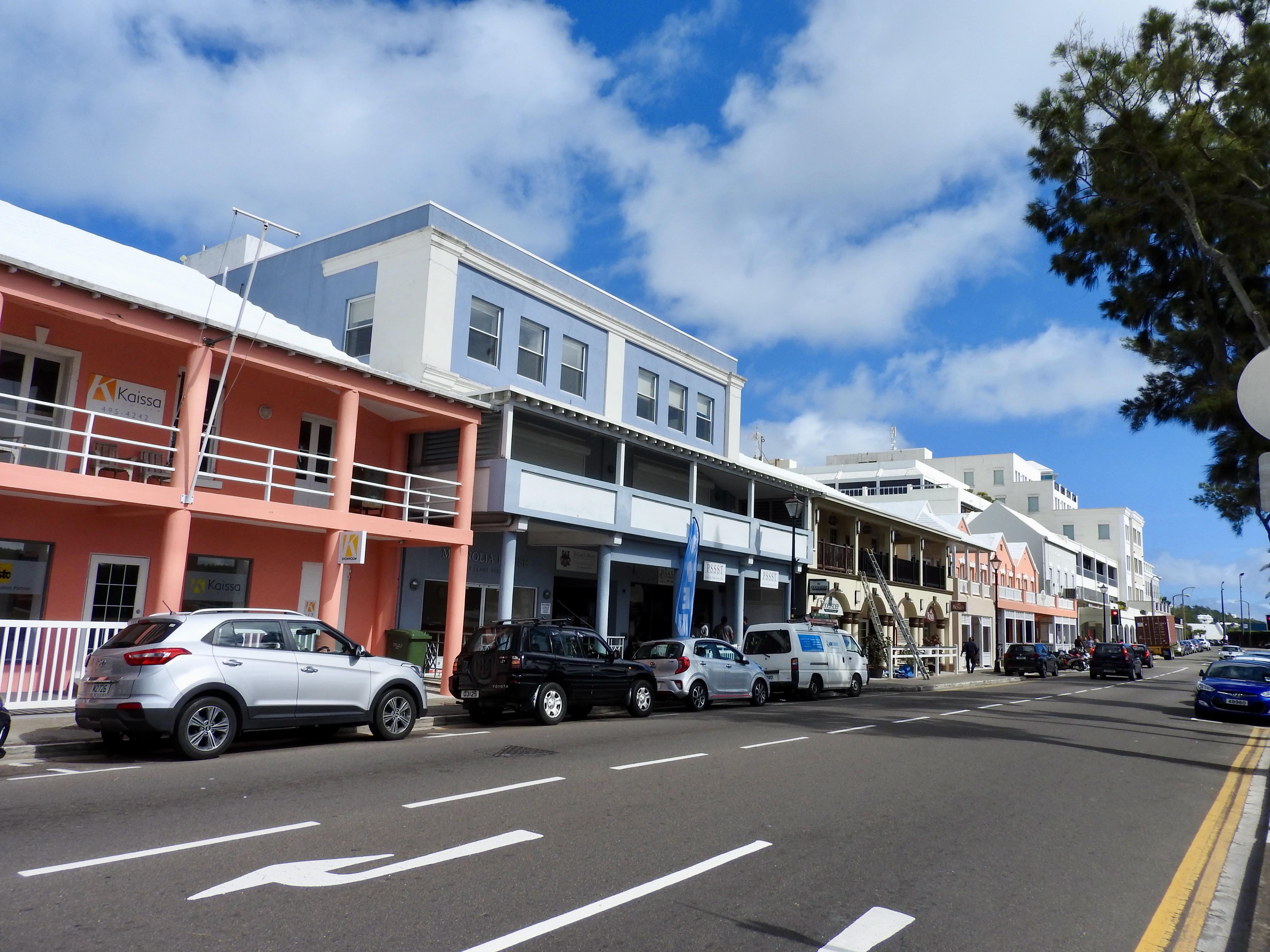
Pastels appeared everywhere. Seemingly every building featured those characteristic soft pale hues. Walk down any street and eventually every combination would appear. Lavender, coral, periwinkle, mint and various shades of tan seemed to dominate, along with lots of white.
To be honest I started getting tired of it and began to crave bolder tones. I’ve seen similar pastel shading in plenty of other beach towns although Bermuda may have taken it to the farthest extreme.
Functionality
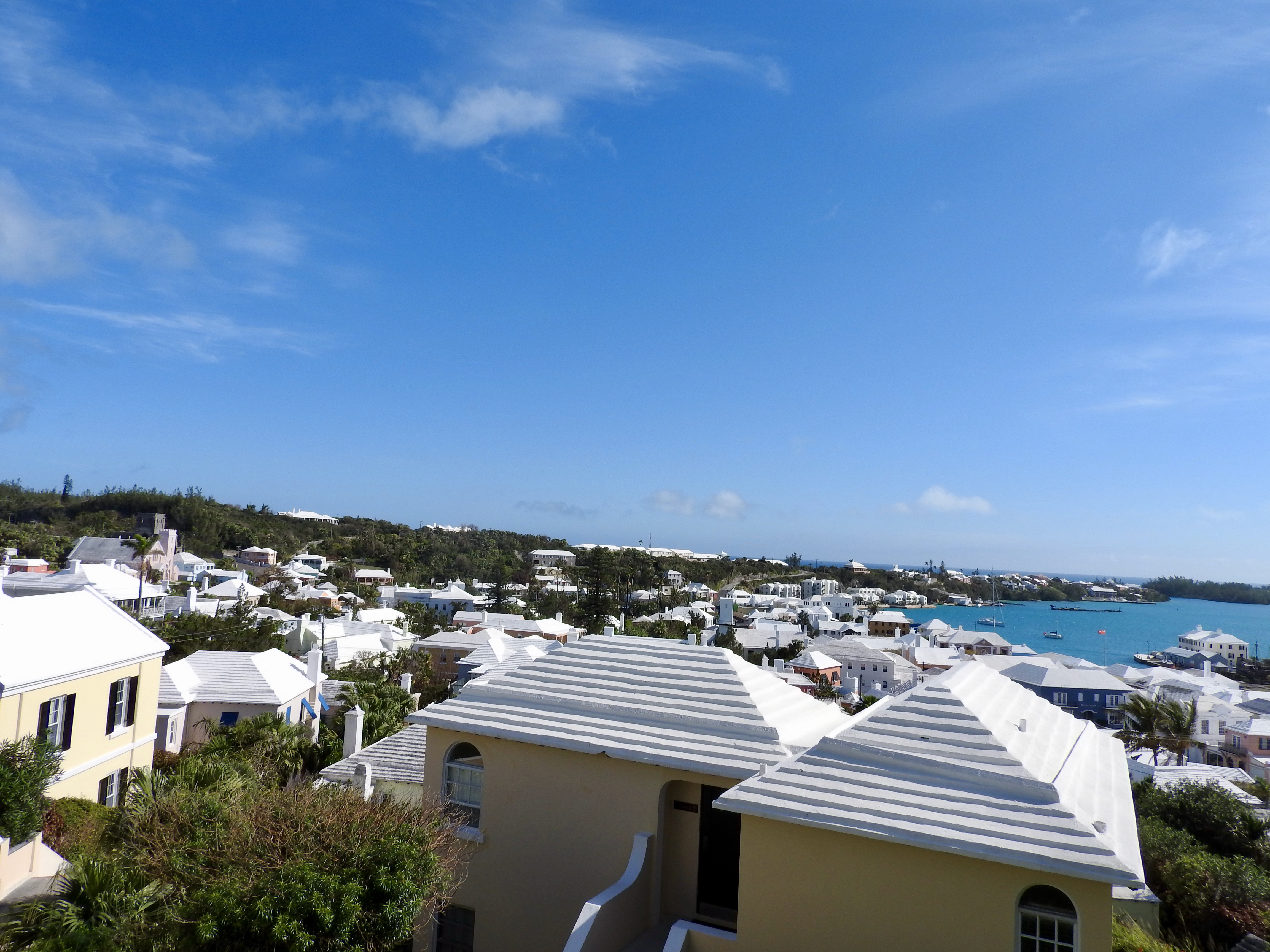
I noticed the angular rooftops from the first moment I arrived. Typically they featured distinct steps arranged in a fairly sharp pitch. They sort-of looked like they’d been constructed from giant LEGO® blocks. I thought it might be a decorative flourish although I learned it actually hid a practical purpose.
Bermuda had precious little fresh water, certainly not enough for 65,000 people. Caves riddled the underside of the archipelago. Falling rain quickly soaked through porous limestone into the salty water table below, making it difficult to capture. The few surface ponds were generally brackish.
Each Bermudian building needed to capture and store rainfall for daily household use. The terraced roofs channeled rain into underground cisterns more effectively than other designs.
Sharing Spaces
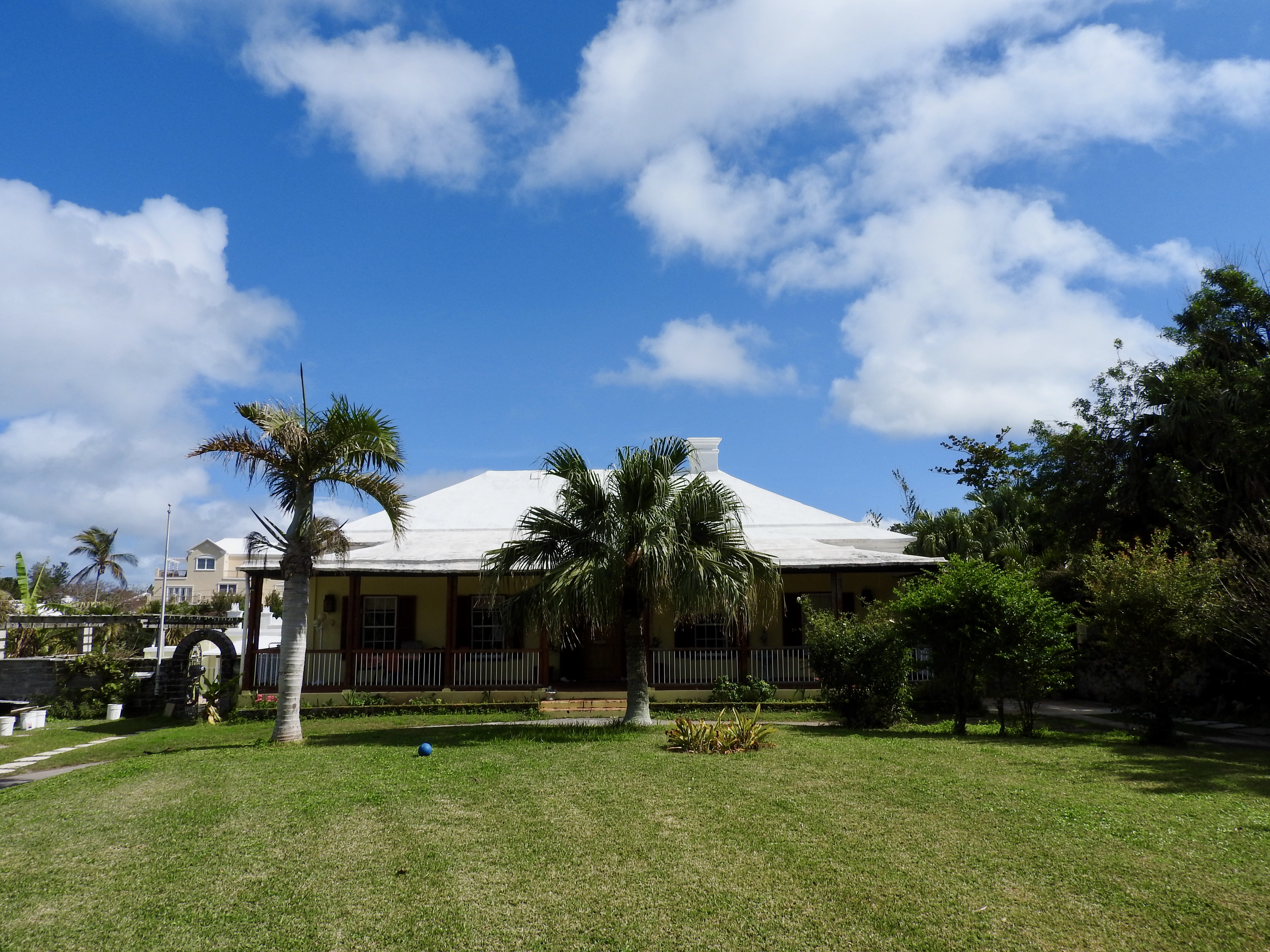
Bermuda had a lot of spectacularly spacious homes owned by extremely wealthy people. Unfortunately the majority of residents did not live in similar luxury. They still needed to put a roof over their heads despite limited land and expensive real estate.
The many Bermudians of the service economy and tourist trade came up with creative solutions. Oftentimes, families still owned land and homes from earlier times, passing it from generation to generation. Thus, they could add walls inside of a large home to subdivide it, or they could build additions. Several interrelated families might live on a single property. They could also rent out individual units for extra income.
We stayed at an Airbnb near Hamilton arranged in this manner, shown in the photo above. Built on a hill, another complete story existed on a lower level. The house was quite large. However, the daughter lived on the top floor and the father on the bottom floor. They rented out two smaller apartment permanently attached to the house, plus an Airbnb unit, all as separate households in the same physical structure.
In Bermuda, it was important to create distinct households. Each household could own only a single automobile.
Moongates

I loved the moongates. Although, why did they even exist? They seemed so oddly uncharacteristic. Thank goodness for the Intertubes where I learned the secret.
“In 1860, a local sea captain was inspired by his visit to a Chinese garden and returned to the island with plans for its very first moongate. Over the years, the moongate became a popular ornamental feature and was incorporated into Bermudian Architecture.”
Supposedly they bring good luck to those who walk through them. If so, call me lucky. Honestly I think they existed mostly for the tourists and their selfies.
Decorative Touches
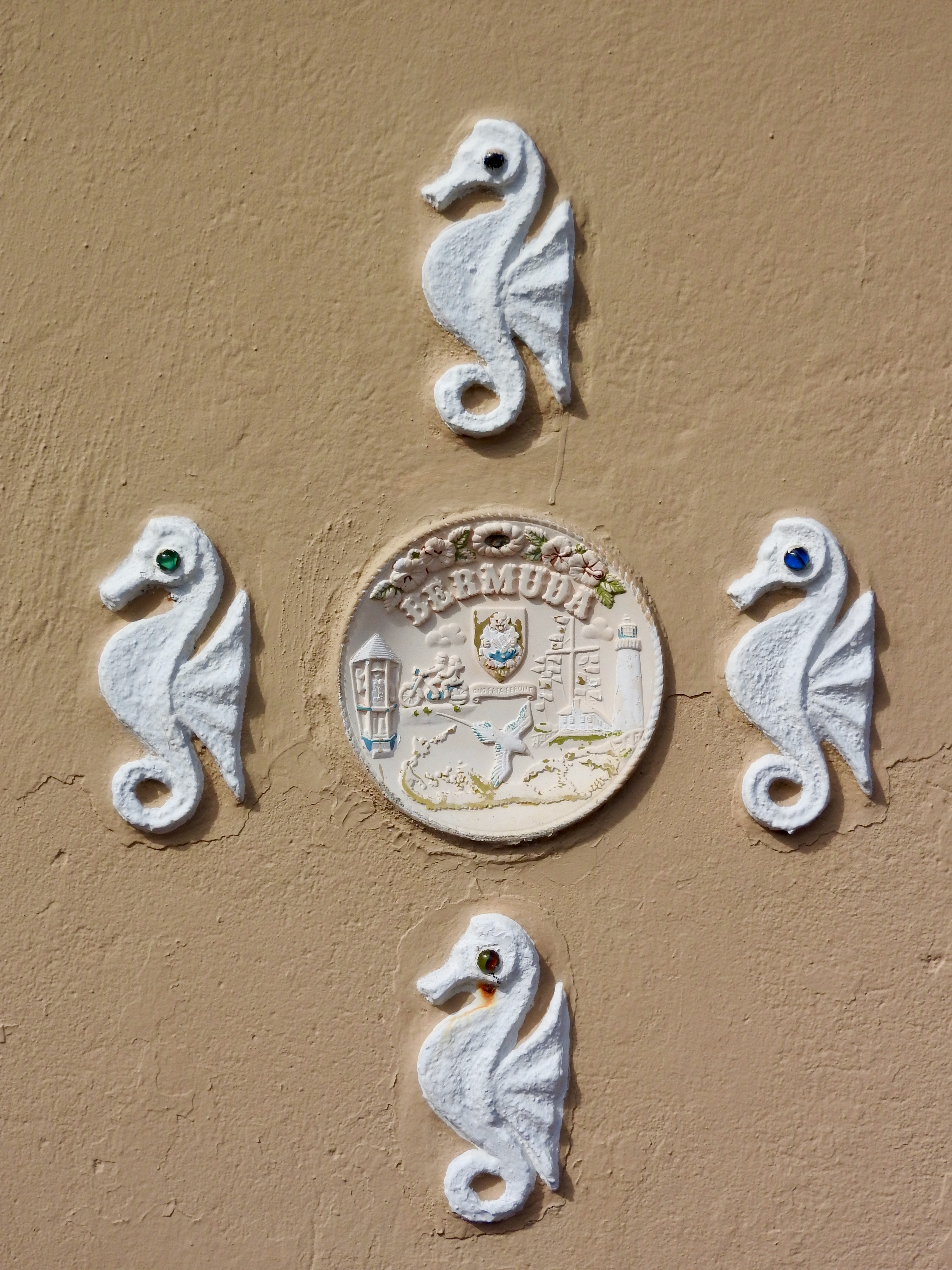
Whimsical touches, accents and flourishes appeared everywhere on building surfaces. Designs seemed fairly typical of beach towns. Sometimes they added little Bermuda-themed decorative plates too.
Take a closer look at the sample I selected for the photo. It featured a map, a couple on a scooter, the traffic birdcage in Hamilton, Gibbs Hill lighthouse, what I think might be the Keep of the former Royal Naval Dockyard, and various other doodads.
Weather Versus Time
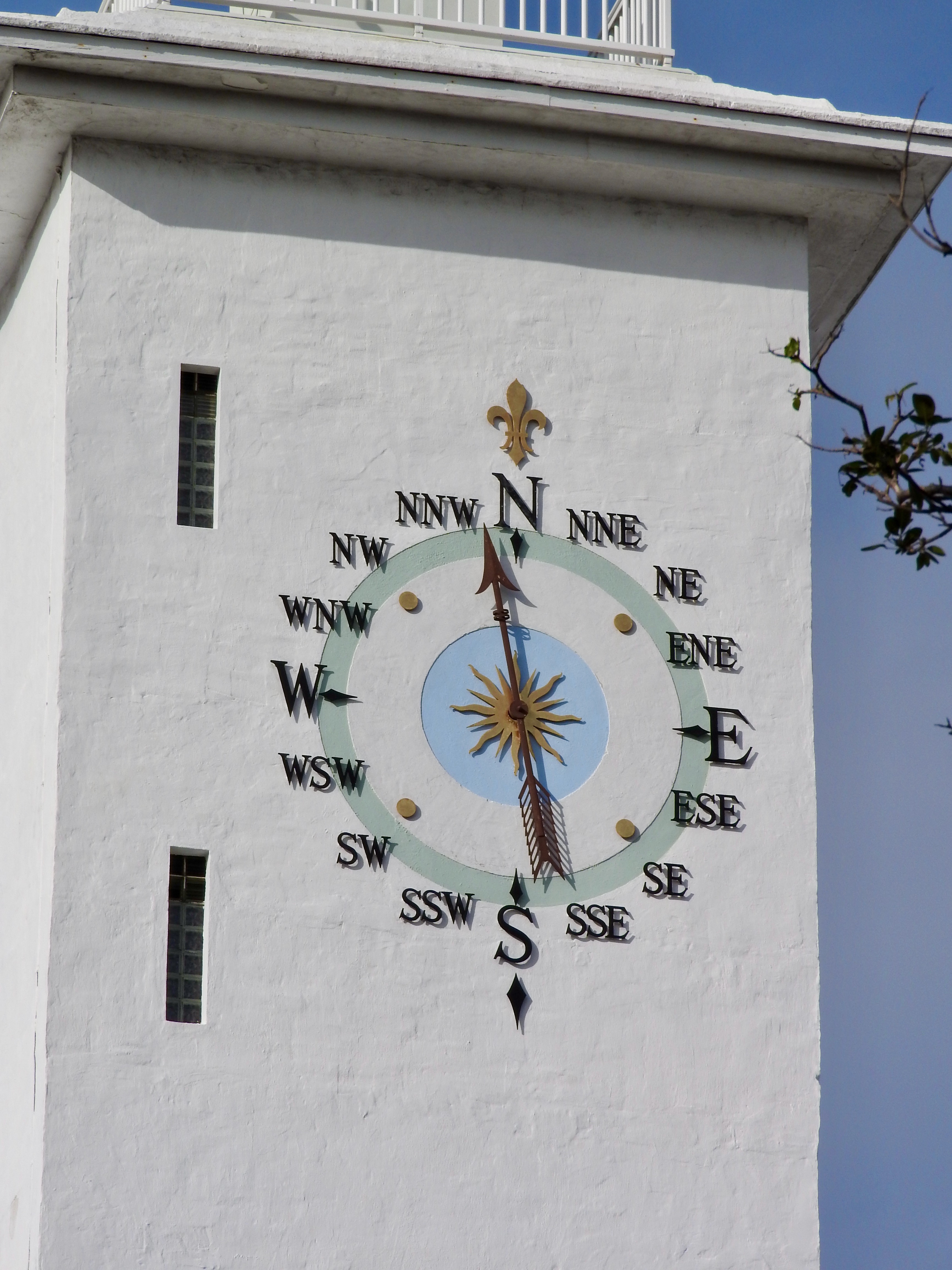
Go to the center of many municipalities and City Hall will feature a clock tower. The same could be said for Hamilton, except, upon closer inspection, the tower didn’t include a clock. Rather, an arrow pointed the current wind direction where a clock face would normally appear. And the weather vane featured a bronze sailing ship (photo).
Initially this confused me. On second thought, it seemed to make sense. What would be more important in Bermuda, time or wind? It was completely isolated in the middle of the Atlantic Ocean and approachable only by ship until recently. Wind direction mattered a lot. As for the exact hour of day, well, they operated a bit on Island Time. Precision maybe didn’t matter as much in Bermuda as back on the North American mainland.
Articles in the Bermuda Shorts Series:
- Follow the Leader
- Shoreline Scenery
- The Outsider
- Bermuda Railway Trail
- St. George
- Forts
- Architectural Details
- Museums & More
- Lists
See Also: The Complete Photo Album on Flickr

Leave a Reply